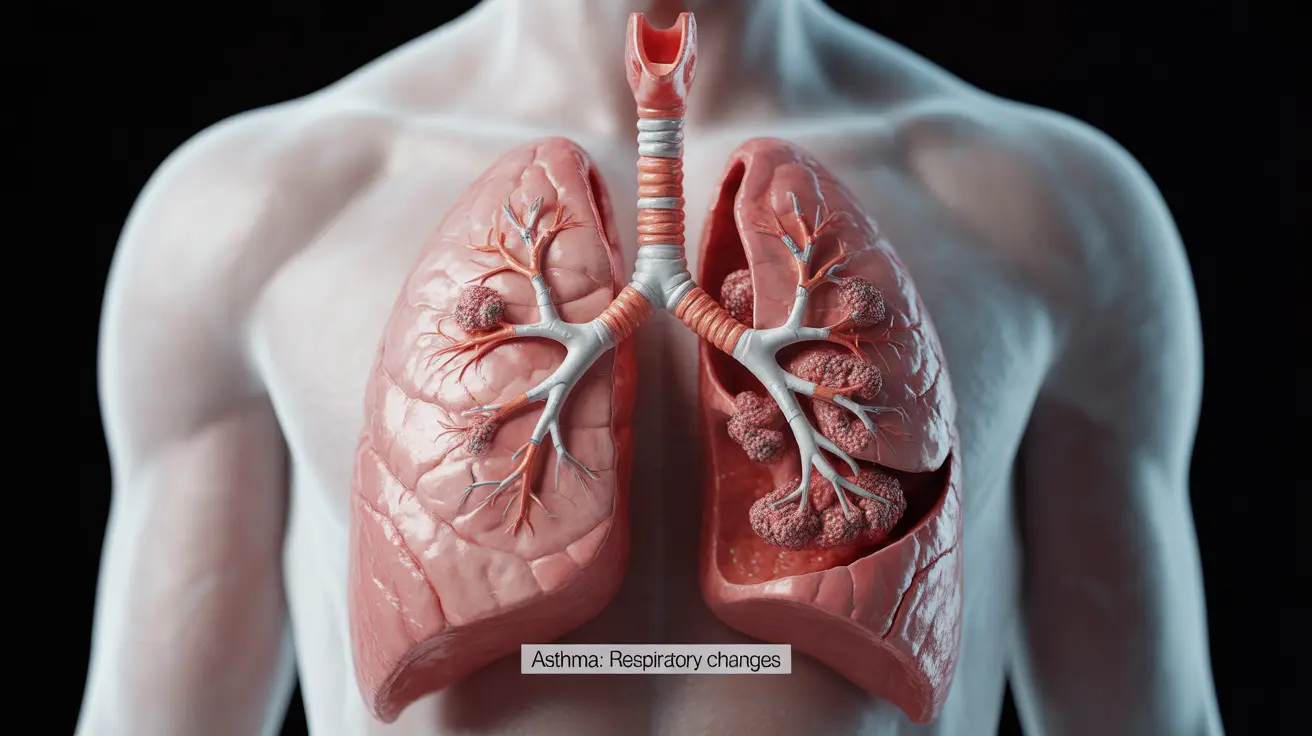Shortness of breath is one of the most distressing symptoms of asthma, affecting millions of people worldwide. This breathing difficulty occurs when airways become inflamed and constricted, making it challenging to move air in and out of the lungs effectively. Understanding how to recognize and manage asthma-related breathing problems is crucial for maintaining quality of life and preventing emergency situations.
Whether you're newly diagnosed or have been managing asthma for years, knowing how to handle shortness of breath is essential for your well-being. This comprehensive guide will help you understand the causes, recognize warning signs, and learn effective management strategies.
Understanding Asthma-Related Shortness of Breath
When asthma triggers cause airway inflammation, three main changes occur: the airways become swollen and inflamed, muscles around the airways tighten, and excess mucus is produced. These changes result in breathing difficulty that may feel like:
- Chest tightness
- Inability to take deep breaths
- Rapid, shallow breathing
- Feeling of air hunger
- Wheezing during breathing
Recognizing Asthma Attack Warning Signs
Early recognition of worsening symptoms can help prevent severe attacks. Watch for these warning signs:
- Increasing difficulty breathing during normal activities
- More frequent use of rescue inhalers
- Nighttime awakening due to breathing problems
- Decreased peak flow meter readings
- Persistent cough
Immediate Management Strategies
When experiencing asthma-related shortness of breath, take these immediate steps:
Using Quick-Relief Medications
Use your prescribed rescue inhaler as directed by your healthcare provider. Typically, this means taking 2-4 puffs every 4-6 hours as needed for symptom relief.
Proper Breathing Techniques
Practice pursed-lip breathing and diaphragmatic breathing exercises to help control symptoms. Sit upright, relax your shoulders, and breathe slowly through pursed lips to help maintain airway openness.
Long-Term Prevention and Management
Preventing asthma-related breathing difficulties requires a comprehensive approach:
Medication Adherence
Take all prescribed controller medications consistently, even when feeling well. These medications help prevent inflammation and reduce the likelihood of breathing difficulties.
Trigger Avoidance
Identify and avoid common asthma triggers such as:
- Allergens (pollen, dust, pet dander)
- Air pollution and smoke
- Exercise in cold weather
- Respiratory infections
- Strong odors and chemicals
Regular Monitoring
Keep track of your symptoms and peak flow readings to identify patterns and early warning signs of worsening asthma control.
When to Seek Emergency Care
Some situations require immediate medical attention. Seek emergency care if:
- Rescue medication doesn't provide relief
- Breathing becomes severely labored
- You can't speak in full sentences
- Your lips or fingernails turn blue
- Peak flow readings are less than 50% of your personal best
Frequently Asked Questions
What causes shortness of breath in people with asthma and how can I recognize it? Shortness of breath in asthma is caused by airway inflammation, muscle constriction, and excess mucus production. You can recognize it through symptoms like chest tightness, wheezing, and difficulty taking deep breaths.
How is shortness of breath from asthma treated both at home and in emergency situations? At home, use prescribed rescue inhalers, practice proper breathing techniques, and follow your asthma action plan. In emergencies, seek immediate medical care if rescue medications aren't effective.
When should I seek medical help for shortness of breath related to asthma? Seek immediate medical help if your rescue inhaler isn't providing relief, you can't speak in full sentences, or you experience blue lips or fingernails.
What long-term treatments help prevent shortness of breath and asthma attacks? Long-term treatments include daily controller medications, regular check-ups with your healthcare provider, and maintaining an updated asthma action plan.
How can I manage asthma triggers to reduce episodes of shortness of breath? Manage triggers by maintaining a clean living environment, avoiding known allergens, using air purifiers, and staying indoors when air quality is poor. Keep a diary to identify and track your personal triggers.




